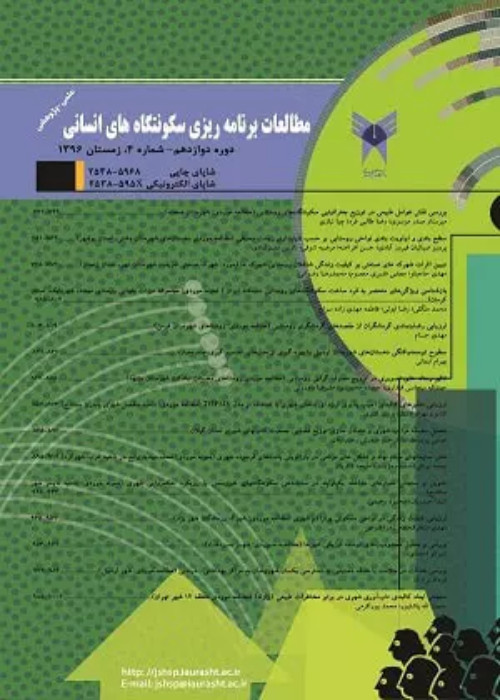Analysis of the principle of establishment in the ossification structure of the city and its effect on the multiplicity and diversity formation of urban spaces (Case study: Sanandaj city)
The issue of cohesion and integration of urban space in relation to the ossification or main structure of the city will be the lever of development of the city and the potential for growth, connection, identity and integrity of the whole city. According to its features, it causes spatial multiplicity and diversity and visual, spatial, and physical continuity, which plays a very effective role in the creation of new spaces.
The purpose of this study is to analyze the principle of establishment in the ossification structure of the city and its effect on the formation of the multiplicity and diversity of urban spaces, in order to discover the factors affecting the formation of this structure and determination of the efficiency of urban spaces.
The current study is a quantitative descriptive-analytical study. This study uses combined method of AHP analytical model and multi-variable regression analysis by using one sample statistical T-Tests using syntax space software in order to determine and classify the factors of the study.Geographical area of the research: The study area is the central part of the city with the focus on Enghelab Street in Sanandaj, which includes the historical bazaar of the street and Enghelab crossroads to the square of Nabovvat.
The findings are presented graphically in two forms of interconnected and statistical maps (calculation of spatial parameters) for each period. Analyses show that the average amount of interconnection in Sanandaj, in which the general pattern of interconnection, is very similar to other historical cities in Iran. Accordingly, the market element, which is identified with the darkest lines, has the highest interconnection average and in this regard is the most interconnected structural element of the city and plays the most important role in the structure of the city as a whole.
The design and spatial organization of the axis of Enghelab Street in the center of the city has been based on six criteria of "hierarchy, establishment, balance, dispersion, concentration, and spatial cohesion". The principle of establishment and multiplicity (diversity) has been realized through spatial and physical balance. The concept of "interconnectedness" as the factors affecting "connection, control, depth, interconnectedness" has been evaluated as higher than the theoretical average, which indicates that the criteria of "concentration", "establishment" and "spatial coherence" have the highest rank and importance.
- حق عضویت دریافتی صرف حمایت از نشریات عضو و نگهداری، تکمیل و توسعه مگیران میشود.
- پرداخت حق اشتراک و دانلود مقالات اجازه بازنشر آن در سایر رسانههای چاپی و دیجیتال را به کاربر نمیدهد.



